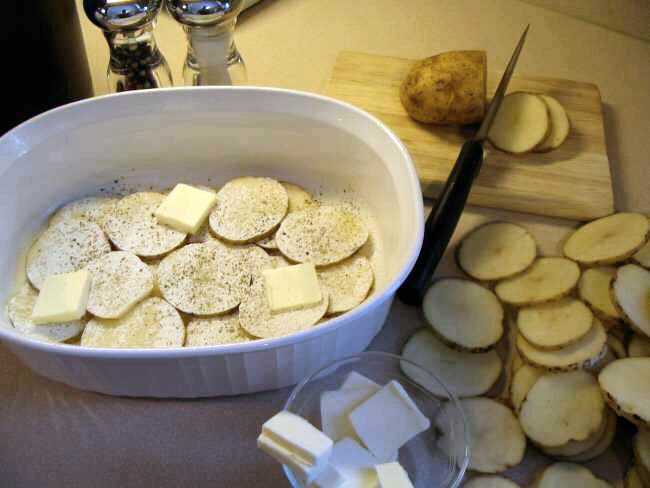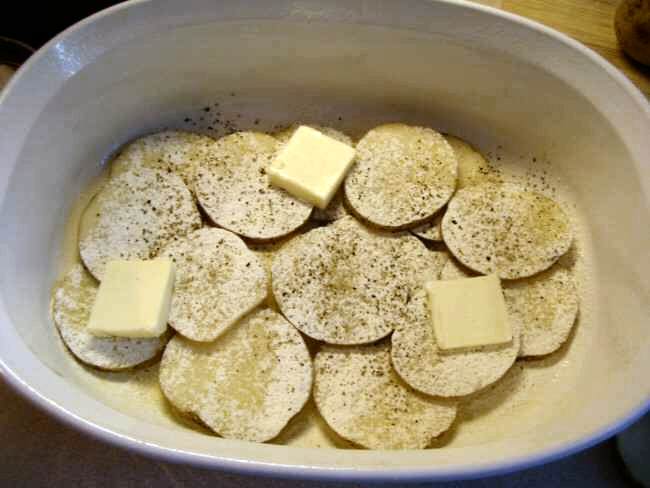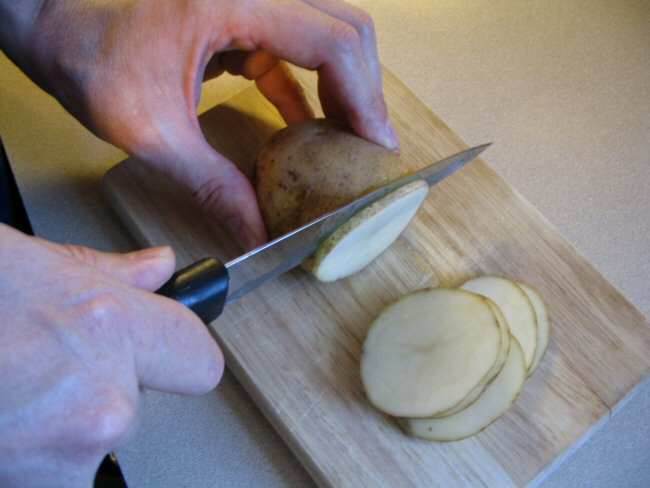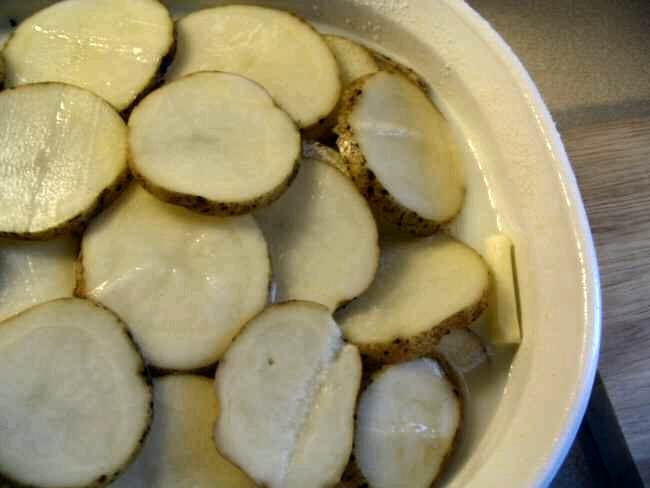
|
Broad Ripple Random Ripplings

The news from Broad Ripple
Brought to you by The Broad Ripple Gazette
(Delivering the news since 2004, every two weeks)

|
| Brought to you by: |

|

|

|

|

|

|
Converted from paper version of the Broad Ripple Gazette (v02n01)
Recipes: Then & Now - Scalloped Potatoes - by Douglas Carpenter
posted: Jan. 07, 2005

Who knew potatoes were so interesting? I have found out a lot about potatoes for this recipe.
Potatoes are native to the Peruvian Andes Mountains, and have been used as food for thousands of years. Europeans found the Native Americans enjoying the versatile and tasty potato, and therefore took some home. It took a while for them to be accepted as food because of a misunderstanding about the plants: it was believed potatoes were poisonous! The plant is in fact toxic, but the tubers are not. The tubers are not really roots, but rather stem cells designed to store food underground over the winter months. That's why they are so good for us. But a potato left too long in the light will begin to turn green. The green skin contains a substance called solanine. Though not likely to cause serious harm, green-skinned potatoes can taste bitter and may result in temporary digestive discomfort. When you find a green-skinned potato, simply peel away the green part, keeping as much of the rest of the skin as possible. This is where most of the nutrients are. Surprisingly, potatoes are one of the most nutritious staple crops discovered by man. With milk in the diet, it can be a sustaining and healthful source of energy, vitamins and minerals. Since the nutrition is in the skin, just scrub well and leave them unpeeled for a healthier meal. One 8-ounce potato is an excellent source of potassium, is rich in vitamin C, and is a good source of fiber. Only 150 calories, potatoes have no fat and no cholesterol, although we often add it in the form of butter and sour cream. The average American eats about 140 pounds of potatoes per year.
Potatoes being so well rounded nutritionally led to the Irish potato famine. The Irish people took to the vegetable with enthusiasm, and the population soared. In the mid 1800's blight swept the European potato crops. The Irish were hardest hit. The population of Ireland dropped by half due to starvation and emigration.
How 'potato' became the name is interesting, too. The sweet potato (Ipomoea batatas) belongs in the same family as the morning glory and is not a relative of the potato. The Spanish, who brought sweet potatoes back from the West Indies, called them by their native name of batatas. When white potatoes (papas) were introduced to Spain some years later, some people thought that they were related. Soon papas were renamed patatas, but both were translated into English as 'potato'.
The method in the following recipe is the way my mother always made scalloped potatoes. Though I think she would add some minced dry onions. This is simplicity at its best. Smooth and creamy, satisfying and delicious. This recipe will make any number of servings depending on how much you need and the size of the casserole dish you use.

image courtesy of Douglas Carpenter
Scalloped Potatoes
Potatoes, about 1 medium per serving
Flour
Butter
Salt and pepper
Milk
Preheat oven to 350 to 400 degrees, whatever temperature you are using for the rest of your meal. Lightly grease a casserole dish.
Scrub raw potatoes well and cut into thin slices leaving the skin on. Place in a casserole dish a layer at a time, seasoning with salt and pepper. Sprinkle the flour over each layer adding the butter in bits. Repeat until all ingredients are no more than 1 ½ to 2 inches deep.
Add milk until it almost covers the potatoes and bake until potatoes are tender when pierced with a fork, 1 hour for higher temperature to 1 ½ for lower temperature. If the potatoes have not browned on top, turn on the broiler for a minute or two. Serve from the baking dish.

image courtesy of Douglas Carpenter

image courtesy of Douglas Carpenter

image courtesy of Douglas Carpenter
Douglas Carpenter is an avid recipe and cookbook collector. He has over 400 cookbooks in his library and he has published two cookbooks of locally-collected recipes. He has won sweepstakes and blue ribbons in the Culinary Arts division of the Indiana State Fair. Email your cooking questions to douglas@BroadRippleGazette.com
douglas@broadripplegazette.com

|

|

|
| Brought to you by: |

|

|

|
| Brought to you by: |

|

|

|


